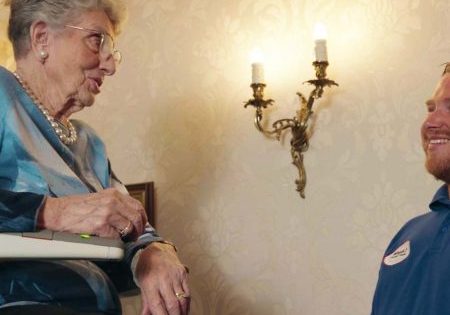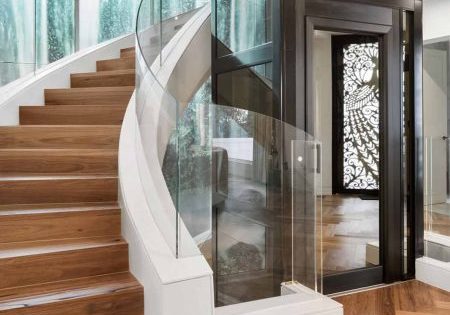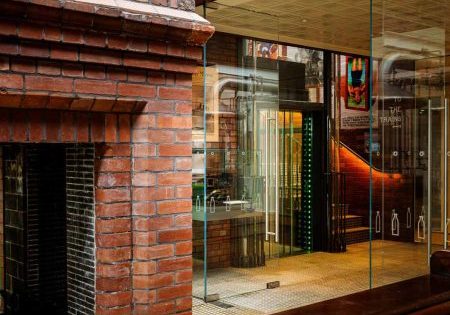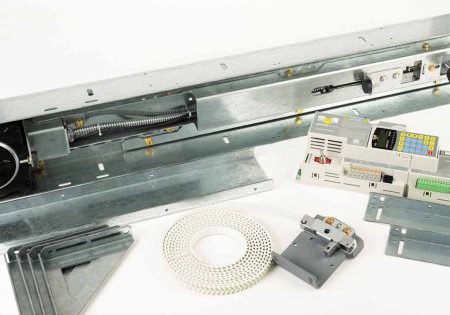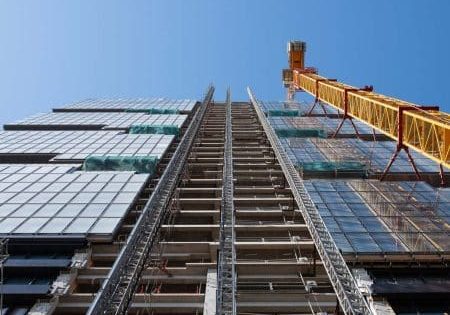Lift Tenders (Invited, Accepted and Rejected) 1921-1929
Jun 3, 2025

An attempt to identify general lift prices during this time period
By the 1920s, British vertical-transportation (VT) companies often participated in a formal tender submission process that allowed for the competitive review of tenders that were developed in response to a set of specifications prepared by an architect and/or engineer. During this period, tender invitations were often published in architectural and engineering journals with the results often appearing in those same journals. Regrettably, this investigation is missing two critical pieces of information associated with this process: the individual project specifications and the actual tenders that were submitted (future archival research may yield this information). Nonetheless, an examination of representative tender invitations and responses in the 1920s provides insights into the economic structure of the VT industry, as well as its overall competitive nature.
The tender process employed by the London County Council (LCC) was described in an invitation for the “provision and erection of an electric goods lift” in the Hammersmith Building Trade School:
“The LCC invites Tenders for the provision and fixing of an Electric Goods Lift of 10 cwt. capacity at the Hammersmith Building Trade School, Lime Grove. The form of tender, contract and specification may be obtained on application to the Chief Engineer, the Old County Hall, Spring Gardens, S.W.1, upon payment of £1 by cheque, draft or money order to the order of the London County Council. This amount will be returnable only if the tenderer shall have sent in a bona-fide tender, and shall not have withdrawn the same. Full particulars of the work may be obtained on personal application, and the contract documents may be inspected before payment of the fee. The contractor will be found to observe the provisions of a fair wages clause, the terms of which are set out fully in the instructions for tender and form of contract, and in the London County Council Gazette. No tender received by the Clerk of the Council at the County Hall, Westminster Bridge, S.E.1, after 4 p.m. on Tuesday, 26th February 1929, will be considered. The Council does not bind itself to accept the lowest or any contract. Montagu H. Cox, Clerk of the London County Council.”[1]
The requirement that a company pay a fee, often referred to as a deposit, was apparently an effort to ensure that only serious tenders worthy of professional review would be submitted. The reference to the required observance of “the provisions of a fair wages clause” serves as reminder of British labour culture during this period. Lastly, the statement that the LCC was not required to accept the lowest tender or, in fact, any tender, is also of interest.
This investigation, which represents the preliminary phase of a larger study, involved the examination of tender data for the following 10 projects: New County Hall (London), Stamford Hill Stores Depot (London), Mental Hospital (Tooting Bec), Tramways Central Repair Depot (London), Grove Park Institution (London), Hackney Institute (Hackney), Weights and Measures office (London), Colindale Hospital (London), Greenwich Power Station and Hammersmith Building Trade School (London). These projects solicited tenders from 38 companies. The list includes familiar and unfamiliar names from British VT history: A. & P. Steven, Ltd. (Glasgow); A. Morgan & Co. (London); Aldous & Campbell, Ltd. (London); British Steel & Iron Exporters, Ltd. (London); Charles Willets, Jr., Ltd. (Cradley Heath); City Electrical Co. (London); E.A. Foulds (Colne, Lancashire); Etchells, Congdon and Muir, Ltd. (Manchester); Express Lift Co., Ltd. (London); Gimson and Co., Ltd. (Leicester); Glasgow Engineers, Ltd. (Glasgow); H. Lowe and Sons, Ltd. (Royton); H. Morris, Ltd. (Loughborough); H.O. Strong & Sons, Ltd. (Bristol); Hammond Bros. & Champness, Ltd. (London); Higginbottom & Mannock, Ltd. (Manchester); Hoisting Appliance Co. (London); Holt and Willetts (Cradley Heath); J. Bennie, Ltd. (Glasgow); J. Ritchie & Sons (Battersea); John Barker and Sons, Ltd. (Oldham); John Hill & Sons (Stourbridge); Keighley Electrical Engineering Co., Ltd. (Keighley); London Hoist & Machinery Co. (London); Marryat and Scott, Ltd. (London); Penrose Lifts (London); Pickerings, Ltd. (Stockton-on-Tees); Porn and Dunwoody, Ltd. (London); R.A. Evans, Ltd. (Leicester); Rawlinsons, Ltd. (Leeds); Reliance Lift & Engineering Co., Ltd. (Bradford); S.H. Heywood & Co., Ltd. (Reddish); Smith, Major and Stevens, Ltd. (Northampton); South Wales Lift and Hoist Co., Titan Lift Co., Ltd. (London); W. Warburton & Co., Ltd. (Halifax); Waygood-Otis, Ltd. (London); and William Wadsworth & Sons, Ltd. (Bolton).
| Date | Building | Lift(s) Required |
|---|---|---|
| 1921 | Stamford Hill Stores Depot | Electric goods lift (capacity 30 cwt.) |
| 1922 | Tramways Central Repair Depot | Four electric lifts |
| 1925 | Grove Park Institution | Electric lifts |
| 1928 | Weights and Measures office | Electric service lift (capacity 15 cwt.) |
| 1921 | New County Hall | Two electric book lifts |
| 1921 | New County Hall | Goods lift |
| 1929 | Greenwich Power Station | Electric lift |
| 1929 | Colindale Hospital | Two electric lifts |
| 1921 | New County Hall | Two passenger lifts |
| 1922 | Tooting Bec Mental Hospital | Two electric automatic passenger lifts and two electric automatic service lifts |
| 1926 | Hackney Institute | Electric goods lift and electric service lift |
| 1929 | Hammersmith Building Trade School | Electric goods lift |
Table 1: Lift project scope explanations 1921-1929
| Date | Company | Building |
|---|---|---|
| 1921 | Holt & Willetts | Stamford Hill Stores Depot |
| 1922 | Holt & Willetts | Tramways Central Repair Depot, Charlton, S.E. |
| 1925 | Holt & Willetts | Grove Park Institution |
| 1928 | Holt & Willetts | Weights and Measures office, Euston Road, London, N.W. |
| 1921 | Express Lift Co., Ltd. | New County Hall, London |
| 1921 | Express Lift Co., Ltd. | New County Hall, London |
| 1929 | Express Lift Co., Ltd. | Greenwich Power Station |
| 1929 | E.A. Foulds | Colindale Hospital |
| 1921 | Waygood-Otis, Ltd. | New County Hall, London |
| 1922 | Smith, Major and Stevens, Ltd. | Tooting Bec Mental Hospital |
| 1926 | Wm. Wadsworth & Sons, Ltd. | Hackney Institute, Dalston Lane, Hackney |
| 1929 | Pickerings, Ltd. | Hammersmith Building Trade School |
The tender invitations included an (often very brief) explanation of the project scope (Table 1). The overall results of these tender competitions were, perhaps surprisingly, dominated by two companies (Table 2). Given the absence of detailed project specifications, it is difficult to determine if some companies were more adept at manufacturing certain types of lifts at more competitive prices. What is evident, when individual tender results are examined, is the wide range of lift prices. As an example: 14 companies submitted tenders for the “supply and erection” of an electric goods lift (capacity 30 cwt) at the Stamford Hill Stores Depot.[2] The difference between the highest bid, Penrose Lifts’ bid of £1,550, and the lowest bid, Holt & Willetts’ accepted bid of £895, is startling (Table 3).
The 1922 tender invitation for the installation of “two electric automatic passenger lifts and two electric automatic service lifts” in the Tooting Bec Mental Hospital attracted 22 companies and yielded a similar result.[3,4] Unfortunately, the bids for the four lifts were presented as a total sum without differentiating the cost of passenger and goods lifts (Table 4). When the results of this competition were first published it was announced that John Hill & Sons (Stourbridge), the lowest bidder, had been awarded the contract. However, The Electrical Times, in its 15 June issue, reported that: “In our issue of May 18, we stated the tender of J. Hill and Sons had been accepted for the installation of electric passenger and service lifts at Tooting Bec Mental Hospital. This was an error, the successful firm being Smith, Major and Stevens, Abbey Works, Northampton.”[5] This result meant that the Metropolitan Asylums Board (who had issued the tender invitation) passed over the bids of Hill, Penrose Lifts, the Titan Lift Co. and R.A. Evans in their selection of Smith, Major and Stevens. The reason for their selection was not given.
In addition to “normative bids,” the tender submissions included several variations on this theme. The 1922 tender invitation for the “supply and erection of four electric lifts for the Tramways Central Repair Depot, Charlton, S.E.” attached bids from 20 companies, one of which submitted a primary bid and an alternative bid.[6,7] The Reliance Lift & Engineering Co., Ltd. (Bradford) submitted a primary bid of £2,795 and an alternative bid of £3,076. Once again, the absence of the actual tenders limits the ability to assess the differences between the bids; however, it is of interest that the alternative bid was higher than the primary bid. Only one other example of a company submitting an alternative bid has been found thus far, perhaps indicating that it was not a common practice. In its response to the tender invitation for the “provision of electric goods lift” at the Hammersmith Building Trade School, Smith, Major and Stevens’ bid of £698 was accompanied by a note stating that its price was “less 2.5% cash discount.”[8] This is the only instance of a “cash discount” discovered thus far. Lastly, of the 127 bids reviewed for this investigation, only two were identified as having been rejected as not meeting project specifications. This low rejection rate reveals the strength of requiring a deposit that was only refundable upon receipt of a viable bid.
The two companies whose bids were found “not to specification” were British Steel & Iron Exporters, Ltd. (its 1922 tender for the “supply and erection of four electric lifts for the Tramways Central Repair Depot”) and A. Morgan & Co. (their 1928 tender for the “supply and erection of electric service lift to carry 15 cwt at the Weights and Measures Office”).[9,10] A preliminary investigation indicates that, apparently, neither company had a direct connection to the lift industry, thus it’s unclear why they chose to submit tenders.
An examination of VT industry members’ participation rates in these project tenders reveals that several companies were heavily invested in this process as a means of gaining commissions. Nineteen of the 38 companies that submitted tenders for the projects identified for this study participated in three or more competitions, and eight submitted six or more tenders. The companies with the highest rate of participation included Etchells; Congdon & Muir; Holt & Willetts; Pickerings; R.A. Evans; Marryat & Scott; Waygood-Otis; Express Lift Co.; and Medway’s Safety Lift Co. (Table 5). Given the costs associated with preparing tender submissions, it may be that these companies had greater financial resources to support this business expense. Of course, participation does not always yield success: Waygood-Otis submitted eight tenders and had only one bid accepted.
One goal of this investigation was to identify general lift prices during this period. However, the variety of lift types referenced in the tender descriptions, coupled with the wide range of prices found in the bid submissions, limits the conclusions that can be drawn from analysing the data. While some of the project bids do appear to fall within broad pricing categories — such as those submitted for the installation of electric lifts at the Grove Park Institution (London) – the overall range allows only guesses as to normative pricing (Table 6).[11] It is, however, hoped that this investigation raises interesting questions and that it will serve as an effective foundation for future studies.
References
[1] “Official Notices” The Electrical Review Supplement (8 February 1929).
[2] “Tenders,” The Builder (19 November 1921).
[3] “Tenders Invited and Accepted,” The Electrician (27 April 1922).
[4] “Tenders,” The Builder (19 May 1922).
[5] “Contracts Closed,” The Electrical Times (15 June 1922).
[6] Untitled, The Builder (14 July 1922).
[7] “Tenders,” The Builder (27 October 1922).
[8] “Plant, Cables and Wiring,” The Electrician (24 May 1929).
[9] “Tenders,” The Builder (27 October 1922).
[10] “Tenders Accepted,” The Electrician (24 Augst 1928).
[11] “Tenders Accepted,” The Electrician (17 April 1925).
Get more of Elevator World. Sign up for our free e-newsletter.


